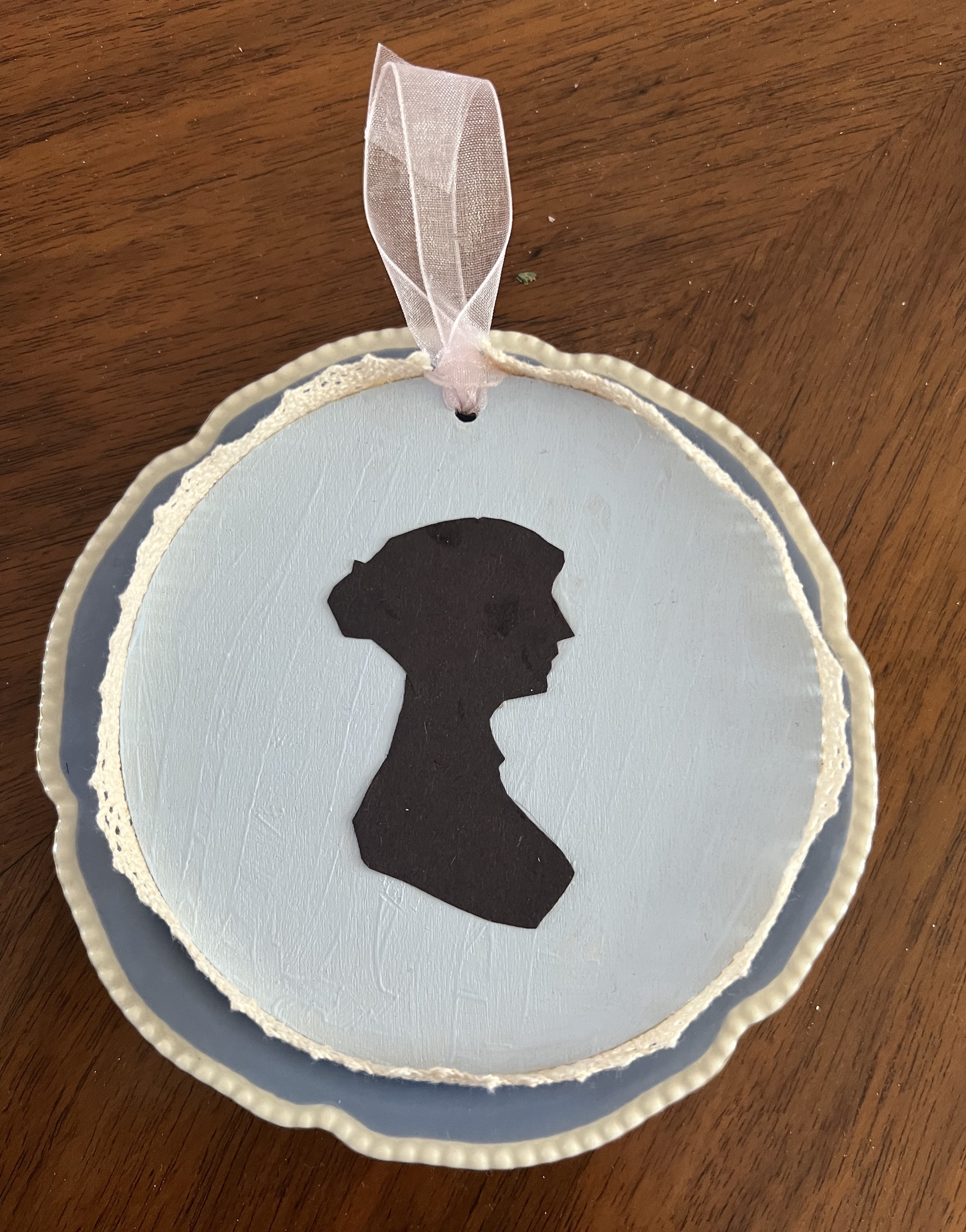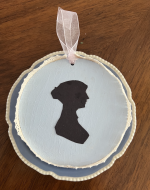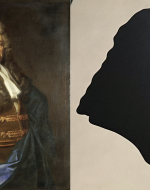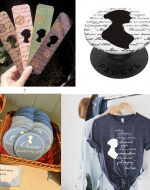Created by Catherine Golden on Fri, 09/01/2023 - 14:12
Description:
The paper silhouette presents a good deal of information about a person or character in an economical way. The art form grew in popularity because it offered a relatively inexpensive alternative to other forms of portraiture (e.g., the portrait miniature, painting, or sculpture). Étienne de Silhouette, who enjoyed making paper creations now called "silhouettes," was a cheapskate, so the art form came to have connotations of cheapness. Nonetheless, silhouettes were created well into the nineteenth century for members across the social classes. This case features a silhouette of the genteel middle-class Jane Austen (1775-1817), a writer celebrated for her wit and romantic fiction, and the wealthy William Blathwayt (1649-1717), a diplomat who served as Secretary of the Lords and English plantations. Today, Jane Austen's silhouette has become an iconic representation to market Austen for the masses. Her silhouette commonly appears on products including coasters, clothing, bookmarks, and iPhone poppers, fueling the Jane Austen industry.
Recreation of an 1800-1815 hollow-cut silhouette, possibly silhouette of Jane Austen, artist unknown, 4 in. x 3 1/8 in. (102 mm x 80 mm). To recall this art form popular in the Regency era, I recreated a silhouette thought to be of Jane Austen that hangs in the National Portrait Gallery in London. This silhouette reveals Jane Austen's hairstyle and dress, influenced by Neoclassicism, as well as her character. Austen's hair is pulled into a bun, which, along with the chignon, was fashionable in her day. Austen wears a "chemise dress," an Empire style gown popular in the Regency era that flatters what we can glimpse of her figure. Moreover, the silhouette reveals Jane has a tranquil, pleasing countenance--she looks genteel.
The Silhouette and the Critical Crafting Process. The process of creating a silhouette is more complicated than initially meets the eye. I first cut out a reproduction of the Jane Austen silhouette and then traced it onto black paper. After an unsuccessful first attempt, I realized I needed a pair of small, pointed scissors to cut out the nuances of dress, hairstyle, and personality of the silhouette. A second attempt proved successful. Rather than mount the black paper cutout onto a white background, I mixed white acrylic paint with just a dab of cerulean blue to achieve a Regency blue tint for the wooden background. To frame the silhouette, I used white lace to form a border and a pale pink chiffon ribbon. The silhouette can be worn as a necklace or, alternately, hung on a wall.
William I Blathwayt (1649-1717), oil on canvas by Michael Dahl, circa 1689-91, and Silhouette of William Blathwayt, reimagined by Keziah Gardom-Carney, n.d., on display in Dyrham Park, UK. Blathwayt was a wealthy man who could easily afford to have his portrait painted in large scale as well as miniature. However, this wealthy landowner elected to have a silhouette as well as a portrait made of his image, and this silhouette hangs today on a wall of his vast estate called Dyrham Park, now a National Trust property. I designed this double image of portrait and silhouette to illustrate how much detail a silhouette can provide about physique, dress, hairstyle, and character. From the silhouette we can discern Blathwayt's periwig of long curly tresses. This 17th-century fashion, introduced from France, became popular after the restoration of Charles II to the British throne. Blathwayt's stylis wig is longer than shoulder length, fashionable among men of means. Although the silhouette does not show the rich brown full-skirted knee-length gentleman's coat of the period, it does show off his frill shirt, an essential part of a gentleman's outfit. The width of the silhouette's body and chin suggests Bathwayt's girth, especially in contrast to Austen's silhouette. The profile of the silhouette shows Blathwayt's smug self-satisfied expression, also evident in the oil portrait.
Jane Austen Merchandise, from the Jane Austen Centre, Amazon, and Etsy, photograph collage by Catherine J. Golden, 2023. Coasters, clothing, bookmarks, and iPhone poppers are but some of the silhouette-laden merchandise, fueling the Jane Austen industry. The iconic silhouette (believed to be Jane Austen) finds its way onto jewelry, playing cards, dishes, stationery, and much more. While most commercial items feature Austen's black silhouette framed against a lighter backdrop as the bookmark and iPhone popper reveal, the shirt and coaster feature a white silhouette on a contrasting darker background. How fun that the "obstinate headstrong girl" coaster in Regency blue pairs Jane's silhouette with Lady Catherine de Bourgh's disparaging comment about Pride and Prejudice's Elizabeth Bennet!
Copyright:
Associated Place(s)
Part of Group:
Featured in Exhibit:
Artist:
- Catherine J. Golden





